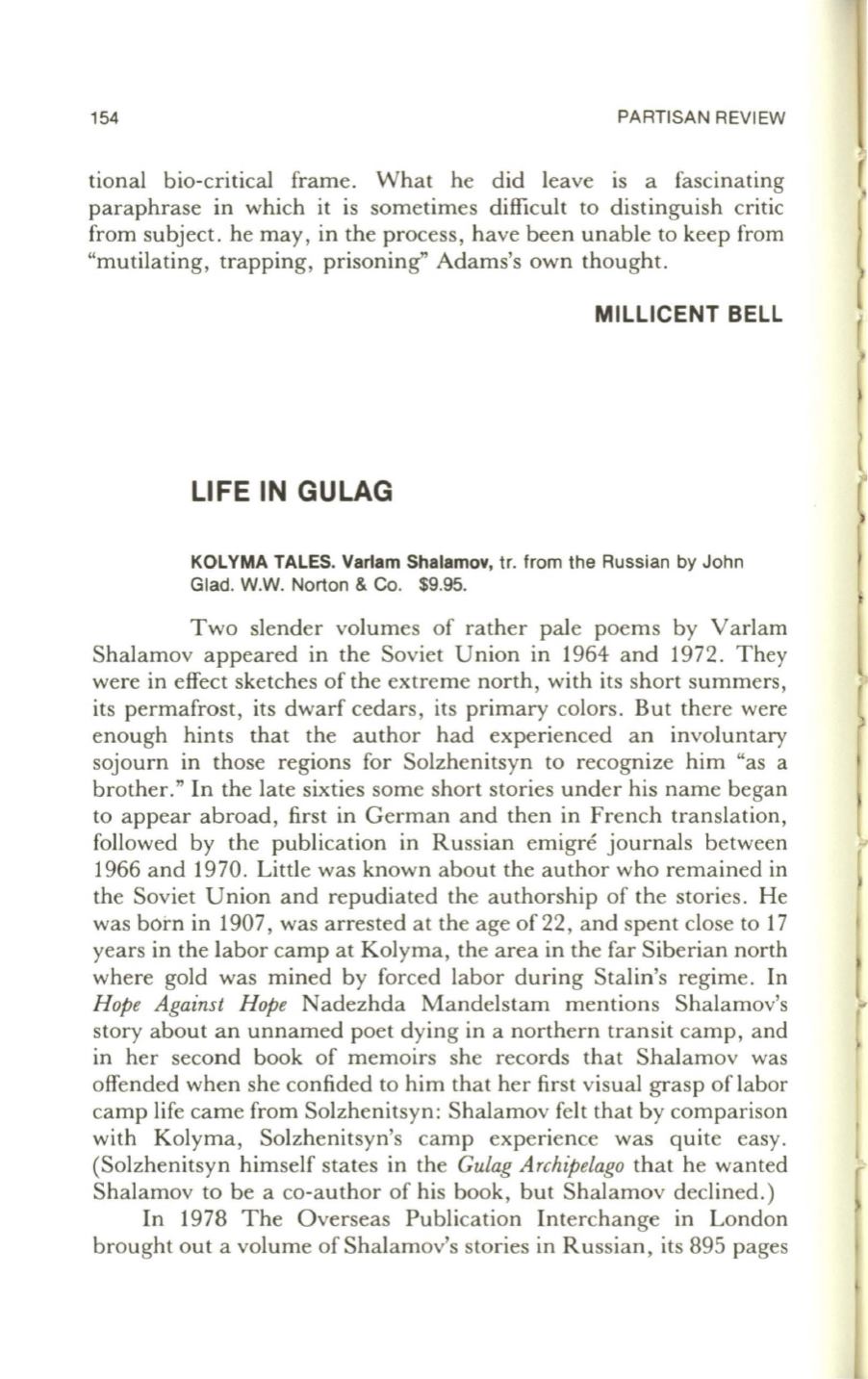
154
PARTISAN REVIEW
tional bio-critical frame . What he did leave is a fascinating
paraphrase in which it is sometimes difficult to distinguish critic
from subject. he may, in the process, have been unable to keep from
"mutilating, trapping, prisoning" Adams's own thought.
MILLICENT BELL
LIFE IN GULAG
KOLYMA TALES. Varlam Shalamov,
tr. from the Russian
by
John
Glad. W.W. Norton & Co. $9.95.
Two slender volumes of rather pale poems by Varlam
Shalamov appeared in the Soviet Union in 1964 and 1972 . They
were in effect sketches of the extreme north, with its short summers,
its permafrost, its dwarf cedars , its primary colors . But there were
enough hints that the author had experienced an involuntary
sojourn in those regions for Solzhenitsyn to recognize him "as a
brother." In the late sixties some short stories under his name began
to appear abroad, first in German and then in French translation,
followed by the publication in Russian emigre journals between
1966 and 1970. Little was known about the author who remained in
the Soviet Union and repudiated the authorship of the stories. He
was born in 1907, was arrested at the age of 22, and spent close to 17
years in the labor camp at Kolyma, the area in the far Siberian north
where gold was mined by forced labor during Stalin's regime . In
Hope Against Hope
Nadezhda Mandelstam mentions Shalamov's
'
story about an unnamed poet dying in a northern transit camp , and
in her second book of memoirs she records that Shalamov was
offended when she confided to him that her first visual grasp of labor
camp life came from Solzhenitsyn : Shalamov felt that by comparison
with Kolyma, Solzhenitsyn's camp experience was quite easy .
(Solzhenitsyn himself states in the
Gulag Archipelago
that he wanted
Shalamov to be a co-author of his book, but Shalamov declined .)
In 1978 The Overseas Publication Interchange in London
brought out a volume of Shalamov's stories in Russian, its 895 pages


